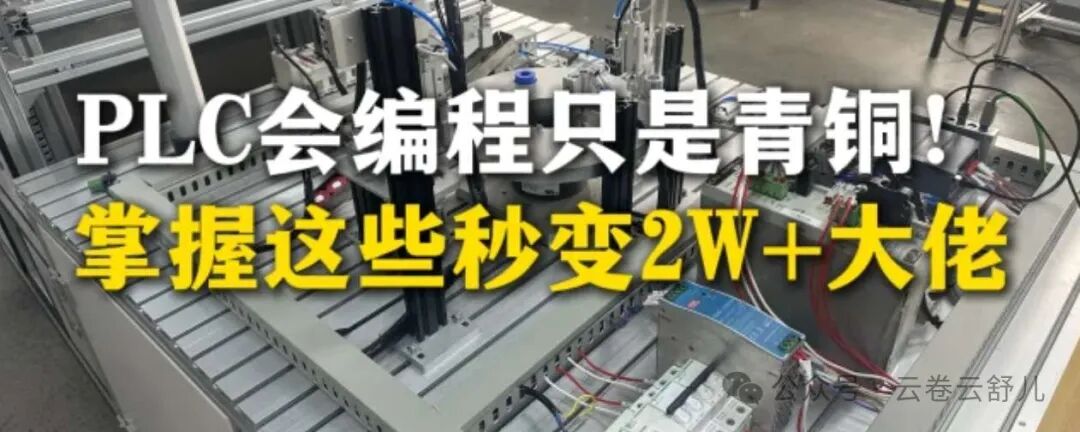
PLC Protocol Optimization: Frame Structure Design to Reduce Transmission Overhead and Improve Efficiency!
Introduction
Hello everyone! Today I want to share a technology that can significantly enhance the communication efficiency of PLCs—frame structure optimization design. "A 30% increase in transmission efficiency is not a dream!" This seemingly technical topic is essentially about “slimming down” PLC communication, allowing data to run faster and more stably. Want to know how to achieve this? Let’s explore together!
What is Frame Structure Optimization?
Imagine you need to send many packages every day. Traditional PLC communication is like using a standard large box to send all items, even if it’s just a pen, it still requires a big box filled with packing material. This not only wastes packaging materials (transmission overhead) but also occupies more transport space (bandwidth).
Frame structure optimization is a **"tailored approach"**:
-
Simplifying header information: Just like writing only necessary information on a shipping label
-
Dynamic frame length adjustment: Choosing the appropriate “packaging” based on data size
-
Merging small data packets: Combining multiple small packages into one reasonably sized box
Why Optimize Frame Structure?
"Is your PLC still using 'bulky' data frames?" Let me illustrate the necessity of optimization with three stark realities:
-
Incredible bandwidth waste: In the Modbus RTU protocol, a request to read a holding register may have actual data occupying only 20%, with the remaining 80% being protocol overhead!
-
Impact on real-time performance: Just like traffic jams, large trucks occupy more road space. An oversized frame structure can delay the transmission of critical data.
-
Energy consumption issues: In wireless PLC applications, every additional bit transmitted consumes precious power.
"Unnecessary protocol overhead = wasted electricity costs!"
Three Key Techniques for Frame Structure Optimization
1. Header Compression Technology
"Cutting redundant information, keeping the essence!"
-
Using shorter address identifiers
-
Using bit-field encoding instead of integer fields
-
Example: Compressing a traditional 6-byte header to 3 bytes
2. Dynamic Frame Length Design
"No more one-size-fits-all!"
-
Short frames for small data (e.g., alarm signals)
-
Long frames for large data (e.g., recipe downloads)
-
Key technique: Setting a reasonable Maximum Transmission Unit (MTU)
3. Data Packing Strategy
"Carpooling is more efficient!"
-
Mixing periodic and non-periodic data for transmission
-
Using “data train” technology: merging multiple small frames for transmission
-
Example: Packing five 10ms periodic signals into one 50ms frame
Practical Application Case
Optimization case for an automotive welding production line:
-
Original protocol: Fixed 512-byte frame, with actual average effective data of only 82 bytes
-
After optimization: Using dynamic frame length (64-256 bytes) + header compression
-
Results:
-
"Transmission efficiency increased by 37%!" -
Communication delay reduced by 28%
-
Battery life of wireless PLC modules extended by 40%
-
Challenges and Solutions
"Optimization is not a walk in the park!" Things to note:
-
Compatibility issues:
- Solution: Design a compatibility mode for gradual transition
-
Error detection difficulty:
- Countermeasure: Increase a simplified but effective CRC check
-
Debugging complexity:
- Recommendation: Use protocol analysis tools (like Wireshark plugins)
How to Start Optimization?
"Three-step strategy":
-
Assess the current situation:
-
Capture existing communication data
-
Calculate the proportion of protocol overhead
-
-
Small-scale testing:
-
Select a non-critical subsystem for a pilot
-
Recommended to start with I/O data collection
-
-
Full-scale promotion:
-
Establish a priority list for optimization
-
Optimize critical devices last
-
Interactive Questions
-
What percentage of protocol overhead is there in your PLC system?
-
Have you encountered production issues due to communication efficiency?
-
Which optimization technique would you most like to try? Why?
Conclusion
Frame structure optimization is like putting a **"tight-fitting suit"** on PLC communication, allowing data to flow more smoothly. A 30% increase in efficiency not only means faster responses but also reserves precious bandwidth for future more complex control needs. "Optimization is endless; efficiency has no peak, only higher!"
Feel free to share your optimization experiences or questions in the comments section, and let’s push PLC communication technology forward together!
ShareSaveViewLike